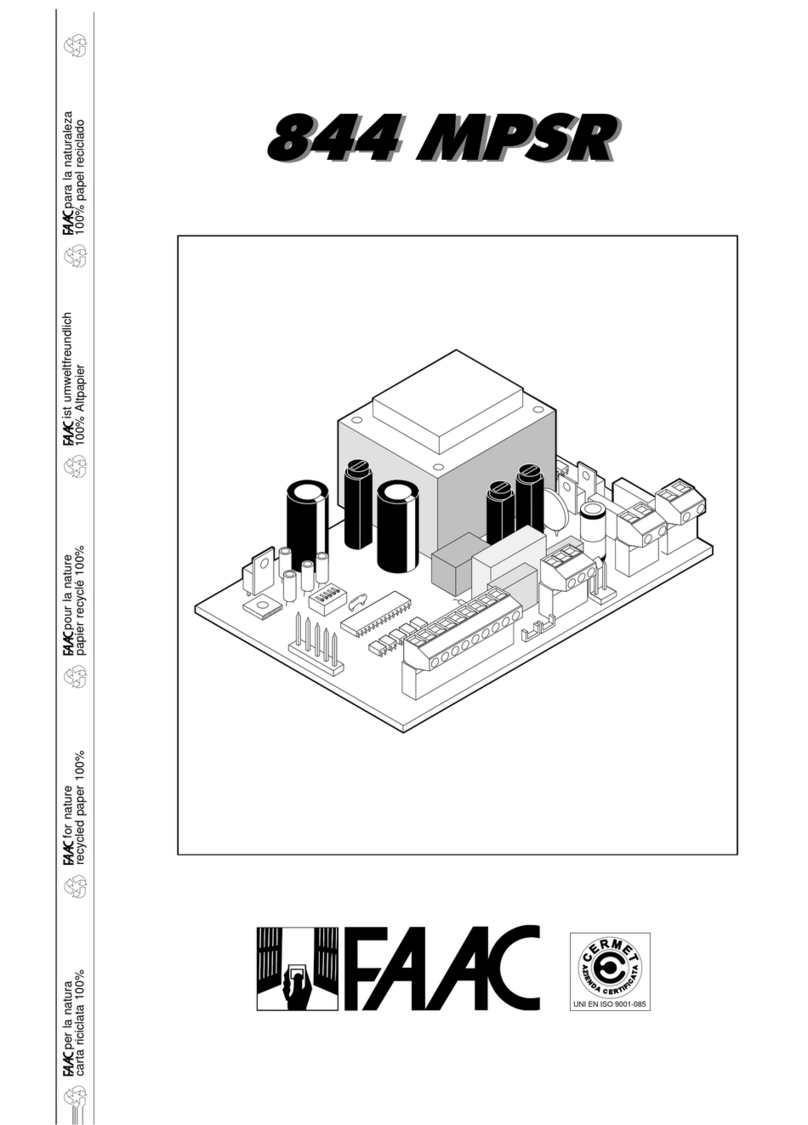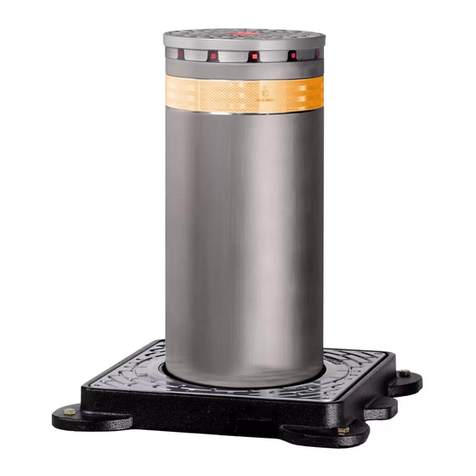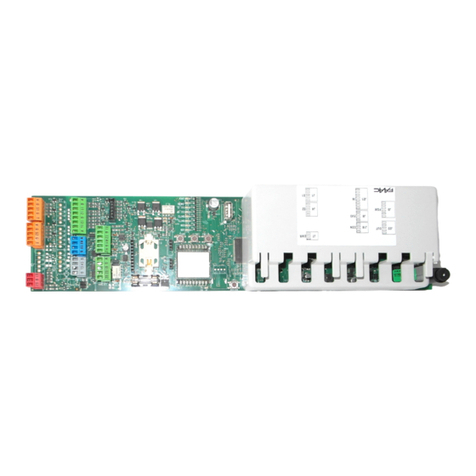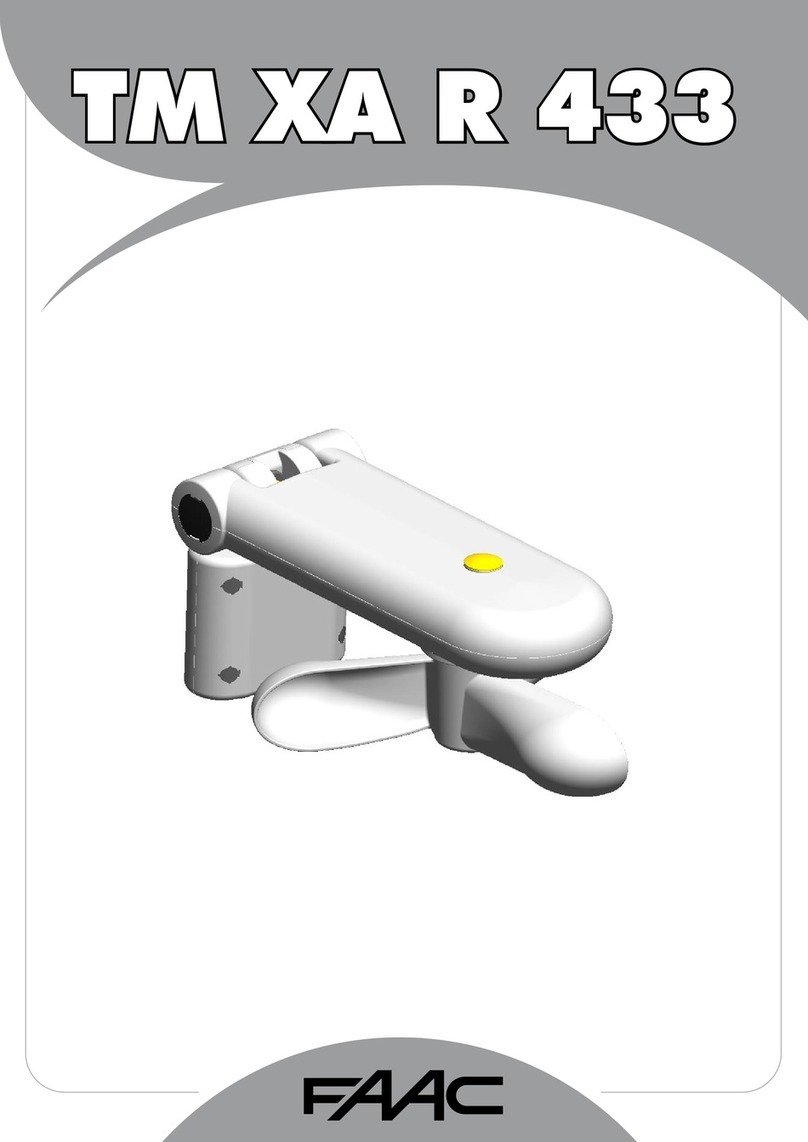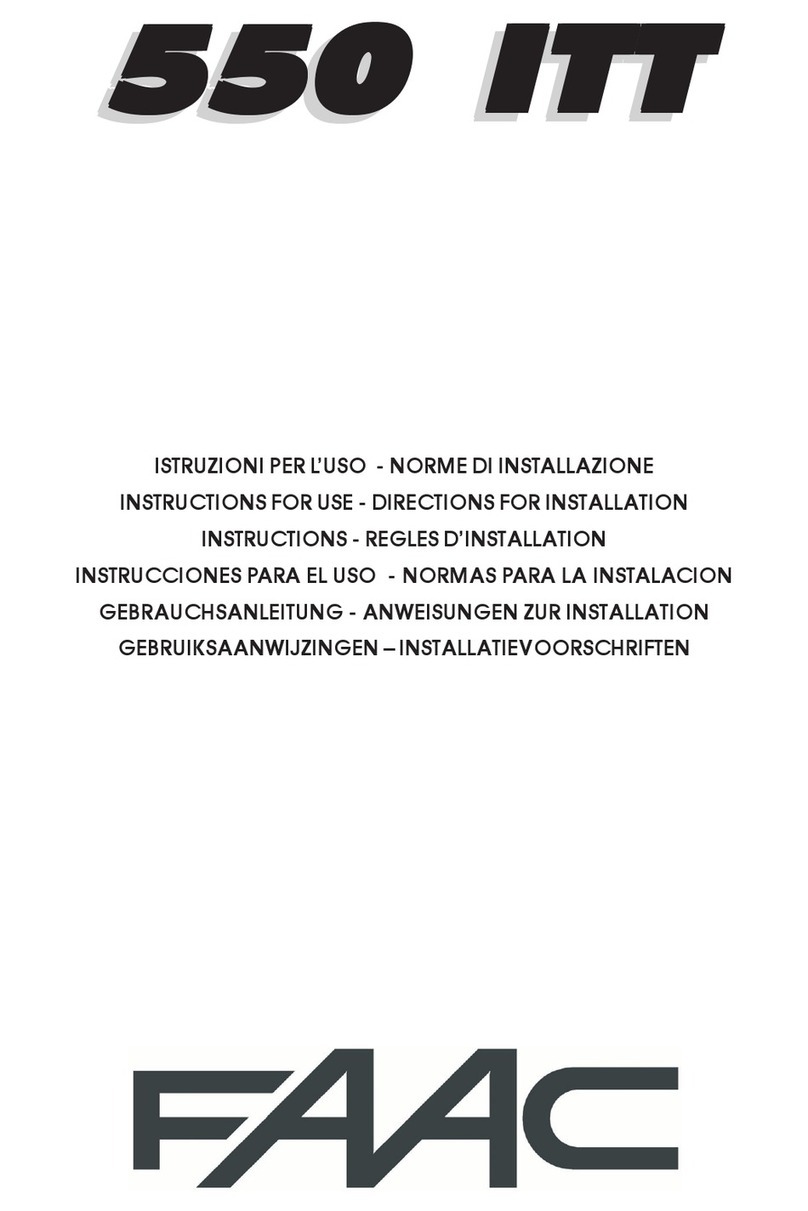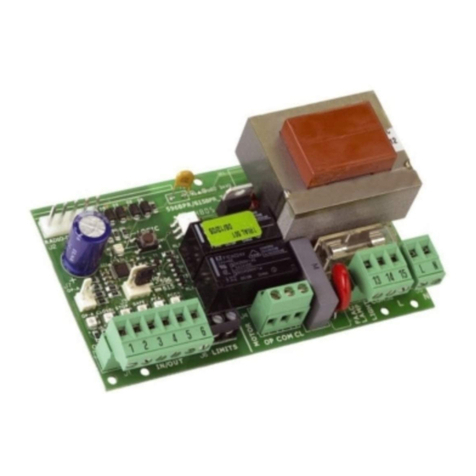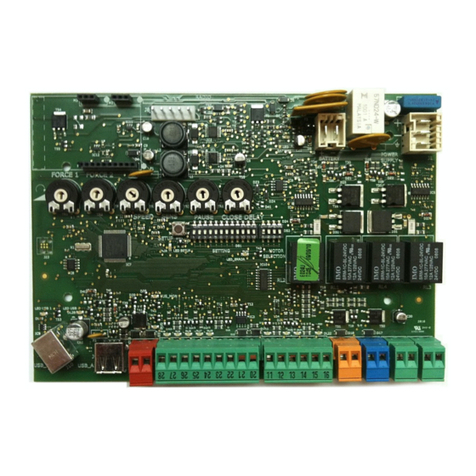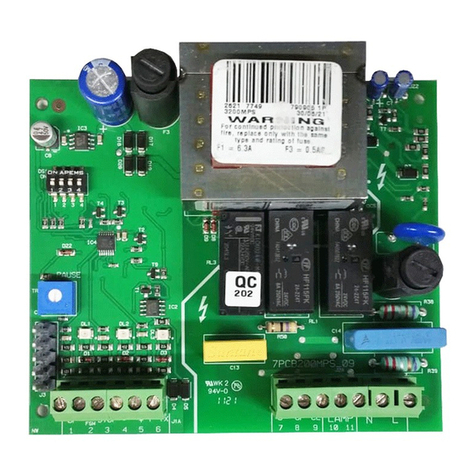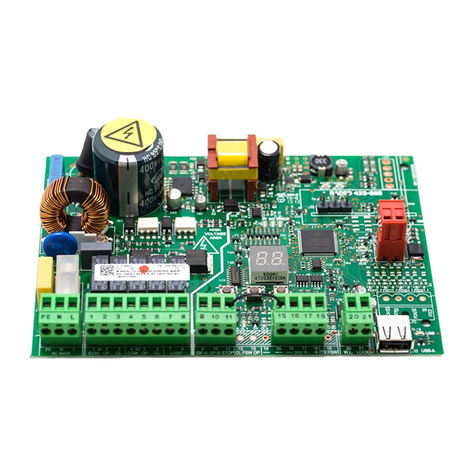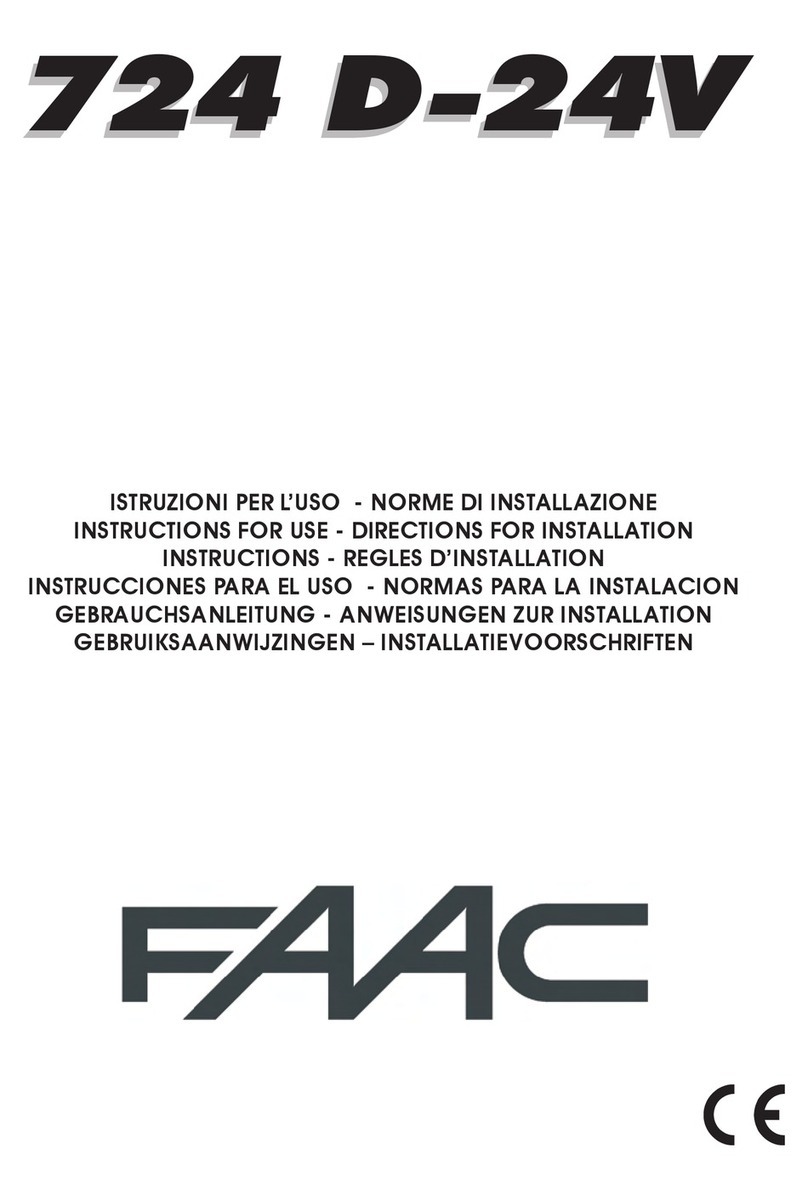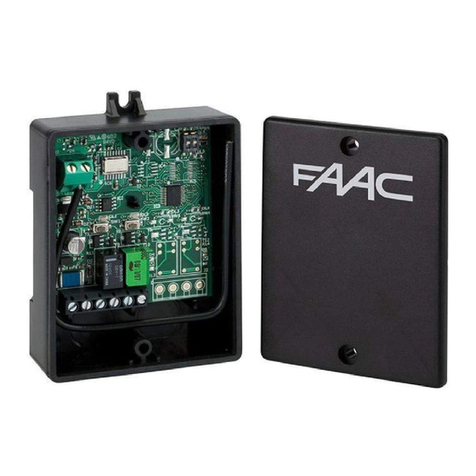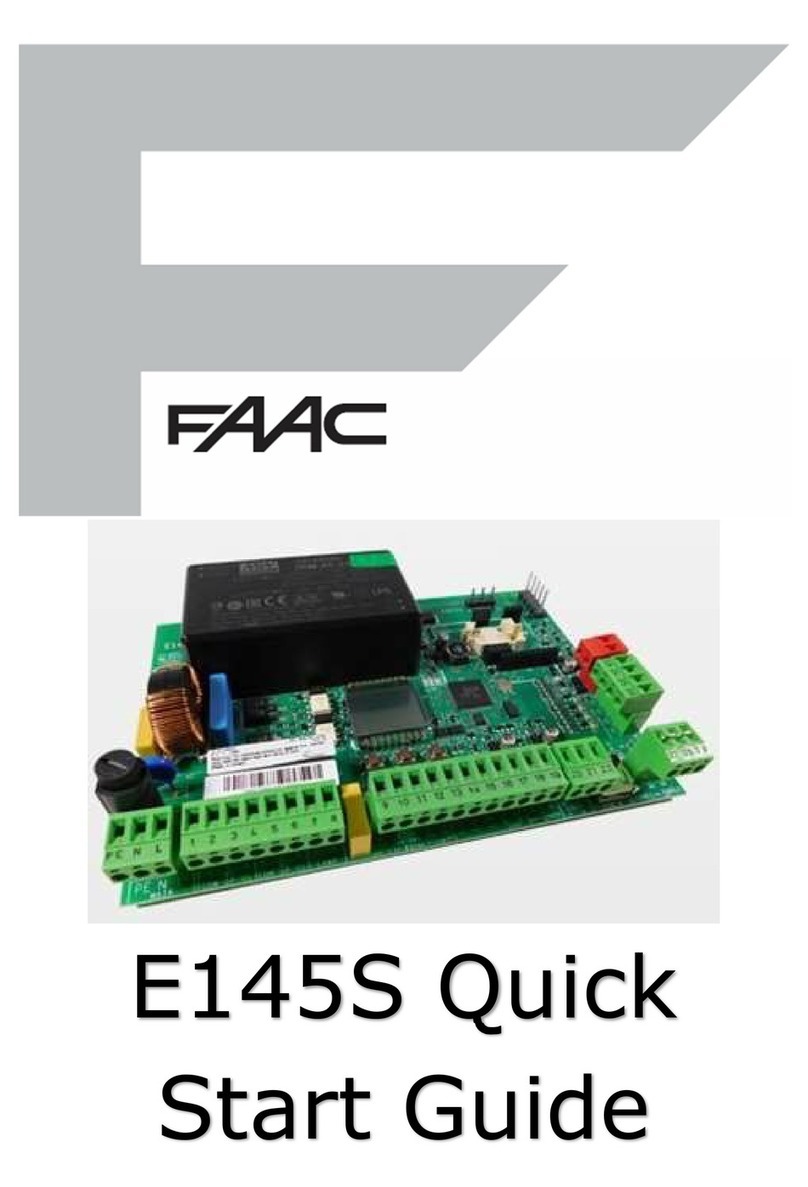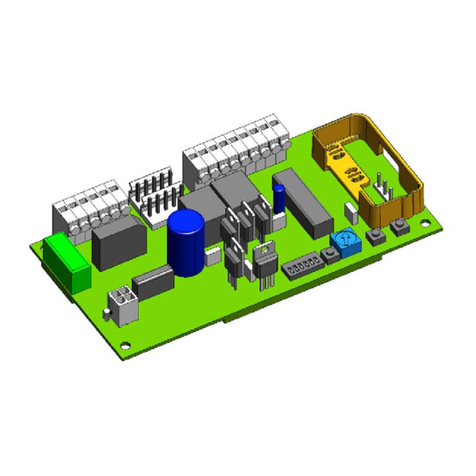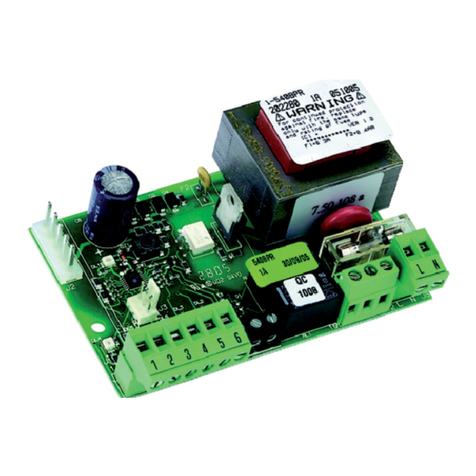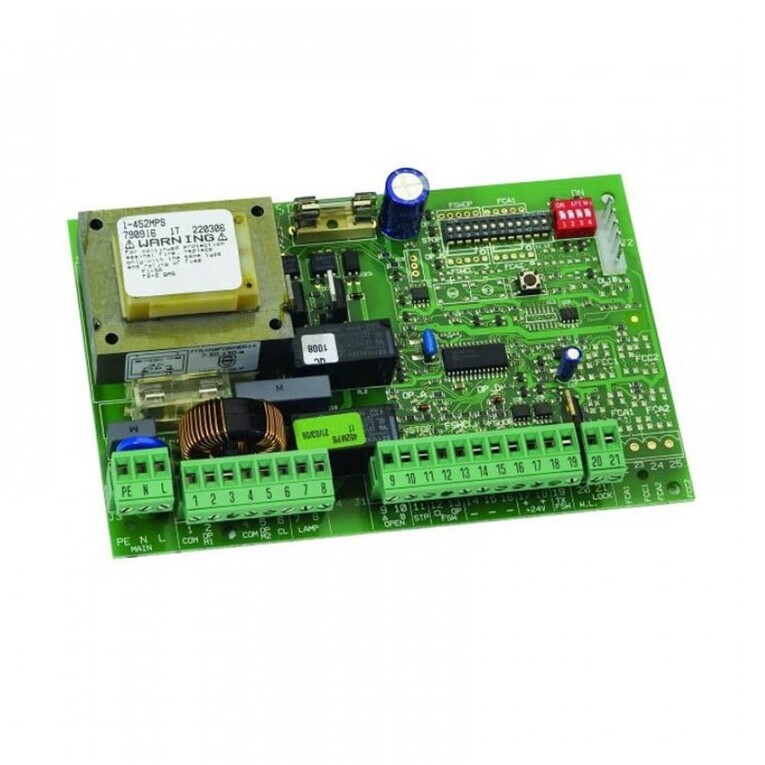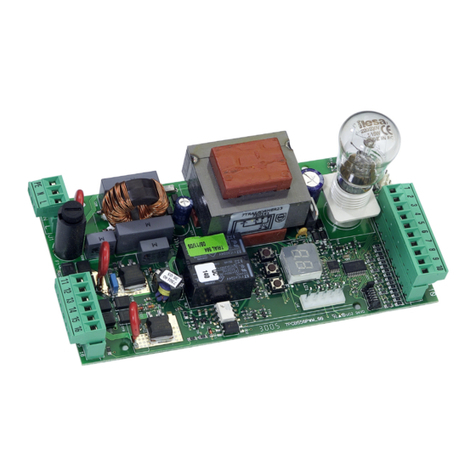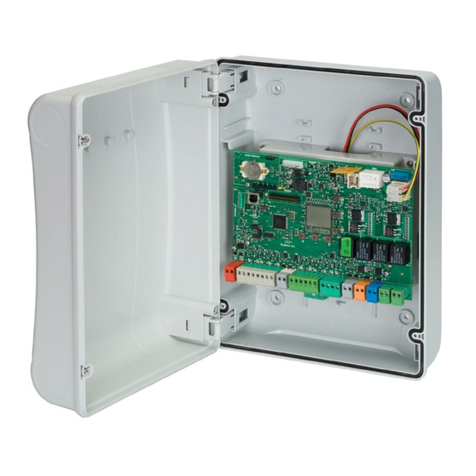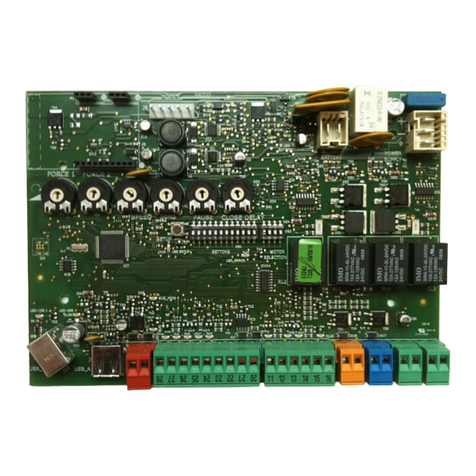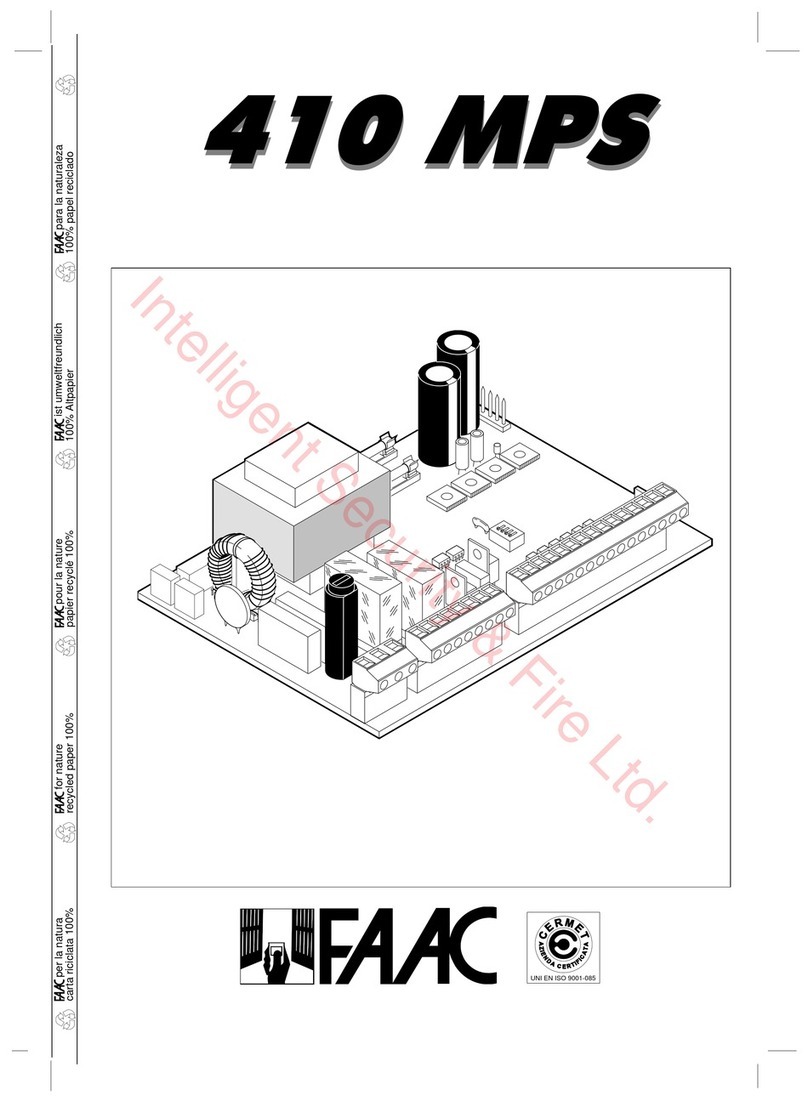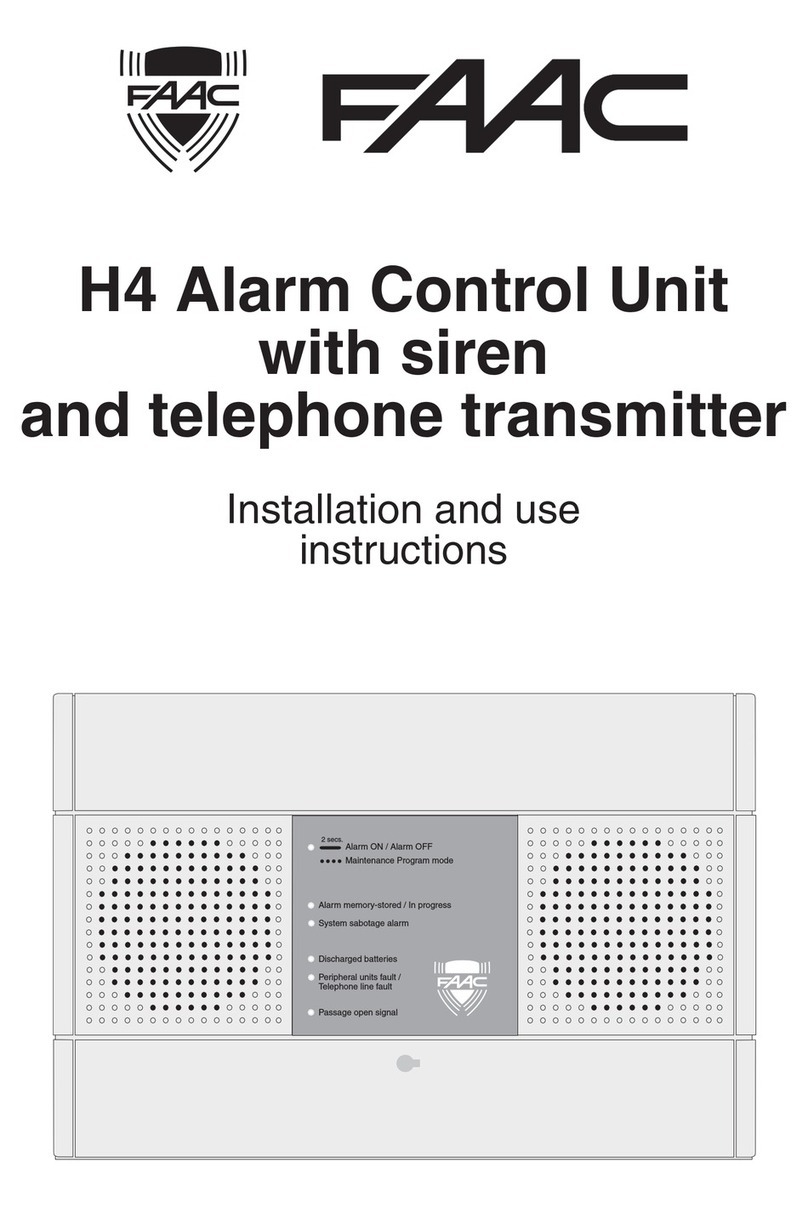
ENGLISH
6
4.2 Terminal board - Power supply (fig. 2)
POWER SUPPLY (terminals PE-N-L):
PE : Earth connection
N : Power supply ( Neutral )
L : Power supply ( Line )
NB.: For correct operation, the board must be connected to the
earth conductor in the system. Install an adequate differential
thermal breaker upstream of the system
MOTOR - (terminals 17-18-19): Motor connection.
Operators for sliding gates: refer to paragraph 4.6 for instructions
on correct connection of the equipment to the interface
board on the operator.
Operator 541: refer to paragraph 4.7 for instructions on correct
connection of the equipment to the interface board on the
operator.
LAMP - (terminals 20-21): Flashing lamp output 230Vac
max 60W.
Consult the relevant tables for a detailed description of
operation in the different logics
OPEN A - “Total Opening” command (terminal 1): any pulse
generator (push-button, detector, etc.) which, by
closing a contact, commands total opening and/or
closing of the gate leaf.
Toinstall several totalopeningpulse generators, connect
the N.O. contacts in parallel (fig. 14).
OPEN B - “Partial opening” or “Closing” command (terminal
2): any pulse generator (push-button, detector, etc.)
which, by closing a contact, commands partial opening
and/or closing of the gate leaf. In the B, C and B/C
logics, it always commands gate closure.
To install several partial opening pulse generators,
connect the N.O. contacts in parallel (fig.14).
FSWOP-Openingsafetydevicescontact(terminal3):Thepurposeof
theopeningsafetydevicesistoprotecttheleafmovement
area during opening. During opening, in the A-AP-S-
E-EP logics the safety devices reverse the movement
of the gate, or stop and restart the movement
when it is released (see advanced programming in
Chpt. 5.2). During the opening cycle in logicsthe B, C
and
B/C, they interrupt movement. They never operate
during the closing cycle.
If the Opening safety devices are engaged when the
gate is closed, they prevent the opening movement.
To install several safety devices, connect the N.C. con-
tacts in series (fig.4).
NB.: If no opening safety devices are connected, jumper
connect inputs FSW OP and -TX FSW (fig. 5).
FSW CL - Closing safety devices contact (terminal 4): The purpose
of the closing safety devices is to protect the gate
movement area during closing. During closing, in the
A-AP-S-E-EP logics, the safety devices reverse the
movement of the gate, or stop and reverse the
movement when it is released (see advanced
programming in Chpt. 5.2). During the closing cycle
in logics B, C and B/C, they interrupt movement. They
never operate during the opening cycle. If the Closing
safety devices are engaged when the gate is open,
they prevent the closing movement.
Toinstallseveralsafetydevices,connecttheN.C.contacts
in series (fig.4).
NB.: If no closing safety devices are connected, jumper
connect terminals FSW CL and -TX FSW (fig. 5).
STOP - STOP contact (terminal 5): any device (e.g. a
push-button) which, by opening a contact, stops gate
movement.
To install several STOP devices, connect the N.C.
contacts in series (fig. 4).
NB.: If STOPdevicesare notconnected,jumper connect
the STOP and - terminals.
SAFE - EDGE safety device contact (terminal 6):Thepurposeof
the "edge" safety device is to protect the leaf movement
areaduringopening/closing. Inalllogics,duringopening
and closing, the safety device reverses gate movement
for 2 seconds. If the safety devices operate again during
the 2-seconds reversing time, it stops movement (STOP)
without any reversing.
If the Edge safety device is engaged while the gate is
closed or open, it prevents movement.
To install several safety devices, connect the N.C.
contacts in series (fig.4).
NB.: If edge safety devices are not connected, jumper
connect the SAFE and - inputs (fig. 5).
FC1 / FC2- Opening and closing limit-switch contacts
(terminals 7 and 8): The purpose of the opening
and closing limit-switches is to establish the reference
point for the stop, or for start of deceleration (pre- and
post-limitswitch), or for operator braking (see advanced
programming in Chpt 5.2). The limit-switch device must
have an NC contact for connection between the input
(FC1 or FC2) and the equipment's terminal (see Fig.2).
OPERATORS FOR SLIDING GATES: consult paragraph 4.6
for correct connection of limit-switches and motor.
OPERATOR 541: consult paragraph 4.7 for correct
connection of limit-switches and motor.
ENCODER - Contacts of motor rotation control sensor
(terminal 9): This input is designed for connection of the
Encoder sensor. The presence of the encoder is signalled
- when the gearmotor is running - by the flashing of the
"ENC" LED on the board. If the encoder is used, the
equipment knows the exact gate position during the entire
movement, and also controls other functions with greater
precision, such as partial opening and decelerations (see
advanced programming in Chpt 5.2.). The encoder also
operates as an anti-crushing device: if the gate strikes an
obstacle during opening or closing, the encoder reverses
gate leaf movement for 2 seconds. If the encoder
operates again during the 2-second reversing time,
it STOPS movement without performing any reversing.
Note: in operators for industrial sectional doors, the
anti-crushing function is not active during closing,
because the operator acts on the rope shaft and not
directly on the door.
– Negative for power supply to accessories (terminals
10, 11 and 12)
+ 24 Vdc - Positive for power supply to accessories
(terminals 13 and 14)
Important: Accessories max. load is 500 mA. To calculate
absorption values, refer to the instructions for individual
accessories.
TX -FSW - Negative for power supply to photocell transmitters
(terminal 15)
If you use this terminal for connecting the negative for
supplying power to the photocell transmitters, you may, if
necessary, also use the FAIL SAFE function (see advanced
programming in Chpt. 5.2).
If this function is enabled, the equipment checks operation
of the photocells before every opening or closing cycle.
4.3 J6 Terminal board - Motors and flashing lamp (fig. 2)
4.4 J1 Terminal board - Accessories (fig. 2)












